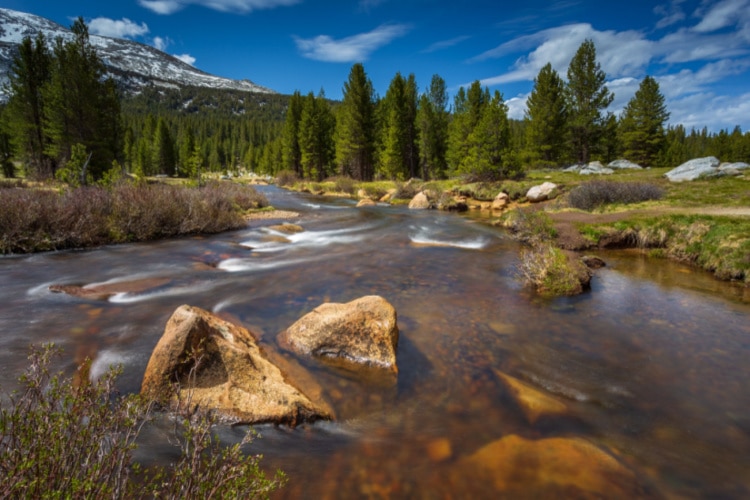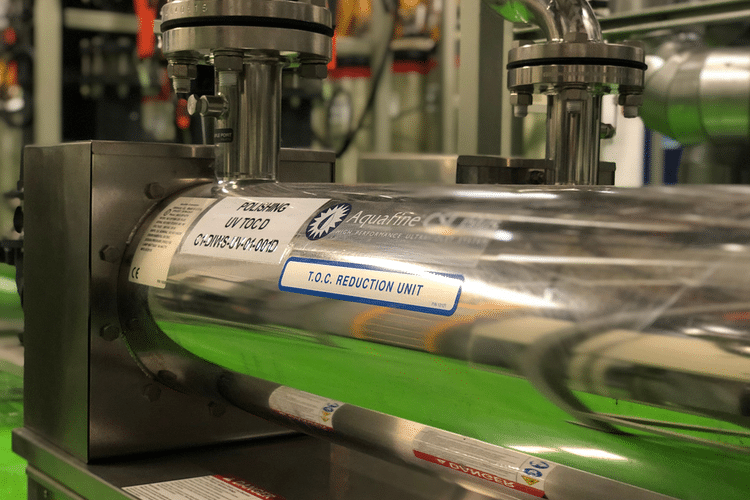In San Francisco, the tap water is mostly safe to drink. The only exceptions are houses built before the 1980s that still have plumbing lines with lead components.
Additionally, although it doesn’t count as tap water, the groundwater (i.e., well water) in rural areas shows high levels of hexavalent chromium.
San Francisco Water Quality Report: What is in the Water?
| Contaminant | San Francisco levels | EPA action limit | EPA’s public health goal |
|---|---|---|---|
| Lead | 0 to 190 ppb | 15 ppb | Zero |
| Fluoride | 0 to 0.8 ppm | 2 ppm | 1 ppm |
| Total trihalomethanes | 11 to 54 ppb | 80 ppb | Zero |
| Hexavalent Chromium | 0.22 to 0.27 ppb in tap water / 8.4 to 27 ppb in well water | 100 ppb | 0.02 ppb |
| Haloacetic acids | 6.7 to 47 ppb | 60 ppb | Zero |
| Chloramines | 0.1 to 3.5 ppm | 4 ppm | 4 ppm |
The San Francisco Public Utilities Commission manages San Francisco’s tap water supply. This organization regularly releases water quality reports for the public to learn more about their water.
According to the 2022 water quality report, over 90,000 water tests were conducted, and the results showed that the water in San Francisco is well within the guidelines set by the Environmental Protection Agency under the National Primary Drinking Water Regulations (NPDWRs) and Safe Drinking Water Act (SDWA).
Some contaminants found in water are leftovers from the disinfection process (such as total trihalomethanes and haloacetic acids), while others are dissolved solids from mineral and heavy metal deposits.
There are also chemicals and heavy metals that leach into the water as a result of industrial and agricultural activities. Hexavalent chromium found in rural groundwater is primarily due to this.
According to an EPA report, there were no contamination levels high enough to be a violation in the municipal water.
The most concerning contaminants found in San Francisco’s tap water are:
- Total trihalomethanes (TTHMs)
- Haloacetic acids (HAA5)
- Chloramines and chlorine
- Fluoride
- Copper
- Lead
- Hexavalent chromium
Chloramines and chlorine are disinfection chemicals utilized by municipal water authorities to prevent bacterial contamination. Although they’re in safe levels in SF (0.1 to 3.5 ppm with an action limit and safety goal of 4 ppm), they may affect the water’s color, odor, and taste.
TTHMs and HAA5 are chlorination byproducts, and their levels in San Francisco’s water (11 – 54 ppb and 6.7 to 47 ppb, respectively) does not exceed EPA’s action limits (80 and 60, respectively). Still, the agency’s public health goal regarding these chemicals is 0 ppb.
Lead and hexavalent chromium, on the other hand, pose a more immediate health risk than other impurities found in San Francisco’s water. In some old buildings, lead levels reach 190 ppb, which is far above the 15 ppb action limit of the EPA (with a public health goal of 0 ppb). In rural areas, hexavalent chromium in well water reaches 27 ppb. Since the public health goal for this heavy metal is 0.02 ppb, you should consider purchasing a water filter for hexavalent chromium removal.
Is The Water Hard or Soft?
Water hardness refers to the calcium and magnesium mineral concentration in the water, with the higher levels being harder water.
Generally, San Francisco’s water is soft. If you’re curious about your water, there are signs around the house to indicate your water’s hardness.
Hard water will leave behind a film on dishes, or you may notice a crusty white build-up on faucets. These are both results of mineral build-up.
Other hard water signs include difficulty cleaning bathtubs or showers and soap that won’t foam.
You can quickly test the water by filling a clear bottle with tap water, adding dish soap, and shaking the bottle. If the shaken bottle has plenty of bubbles and clear water, the water is soft, but if the bottle doesn’t have bubbles and has cloudy water, it’s hard.
Where San Francisco Gets its Water From
Most of the tap water in San Francisco comes from the Tuolumne River. This river supplies the Hetch Hetchy Regional Water Reservoir, which single-handedly gives water to 2.4 million people around California.

Otherwise, San Francisco’s water also comes from surface water reservoirs in the Sierra Nevada, Alameda County, and San Mateo County. Surface water is simply another term for bodies of water above ground, so any nearby lakes or streams may be a part of this.
Some water comes from groundwater sources, such as in San Mateo aquifers.
How Tap Water is Treated in San Francisco
San Francisco’s tap water is treated in multiple ways. For the most part, the process is simple, and it includes a mix of adding chemicals or treating the water with UV light.

The Hetch Hetchy water reservoir is one of the few water sources in America that doesn’t require treatment according to federal regulations. Despite this, there are still some minor treatments to the water from this source.
The water undergoes disinfection from UV light and chlorine. Like many other cities, San Francisco adds some fluoride for dental protection. Finally, chloramination is a final disinfection process that keeps the water safe for longer.
Water from other sources undergoes a more extreme treatment process, following federal regulations. This water has to go through filtration, disinfection, taste and odor control, fluoridation, and corrosion control.
Water treatment is an essential step in keeping San Francisco’s tap water safe to drink, and despite the chemicals, it is a secure process.
Do They Have the Cleanest Tap Water?
San Francisco’s tap water is clean, and they can feel proud of having one of the only water sources in America that requires minimal treatment. The fact that they still treat that water should show how clean it is. Plus, the San Francisco area has had no recent violations in water quality.
However, whether it’s the cleanest in the United States is up for debate. It’s hard to say who has the purest water, and it will rely partially on personal preferences.
There is an annual Berkeley Springs International Water Tasting contest, but San Francisco hasn’t won. Some may be proud to know that other local California cities have taken the title in Santa Barbara and the Metropolitan Water District of Southern California. So perhaps the cleanest water isn’t too far away.
Final Thoughts
San Francisco’s tap water is safe to drink, and while it may not have won any awards, it undoubtedly hasn’t violated any safety regulations. San Francisco can pride itself in knowing it’s water source is one of the purest sources in America.
While some facts about water safety and purification may seem surprising, you can be rest assured that your water has undergone standard practices known to be acceptable for health.